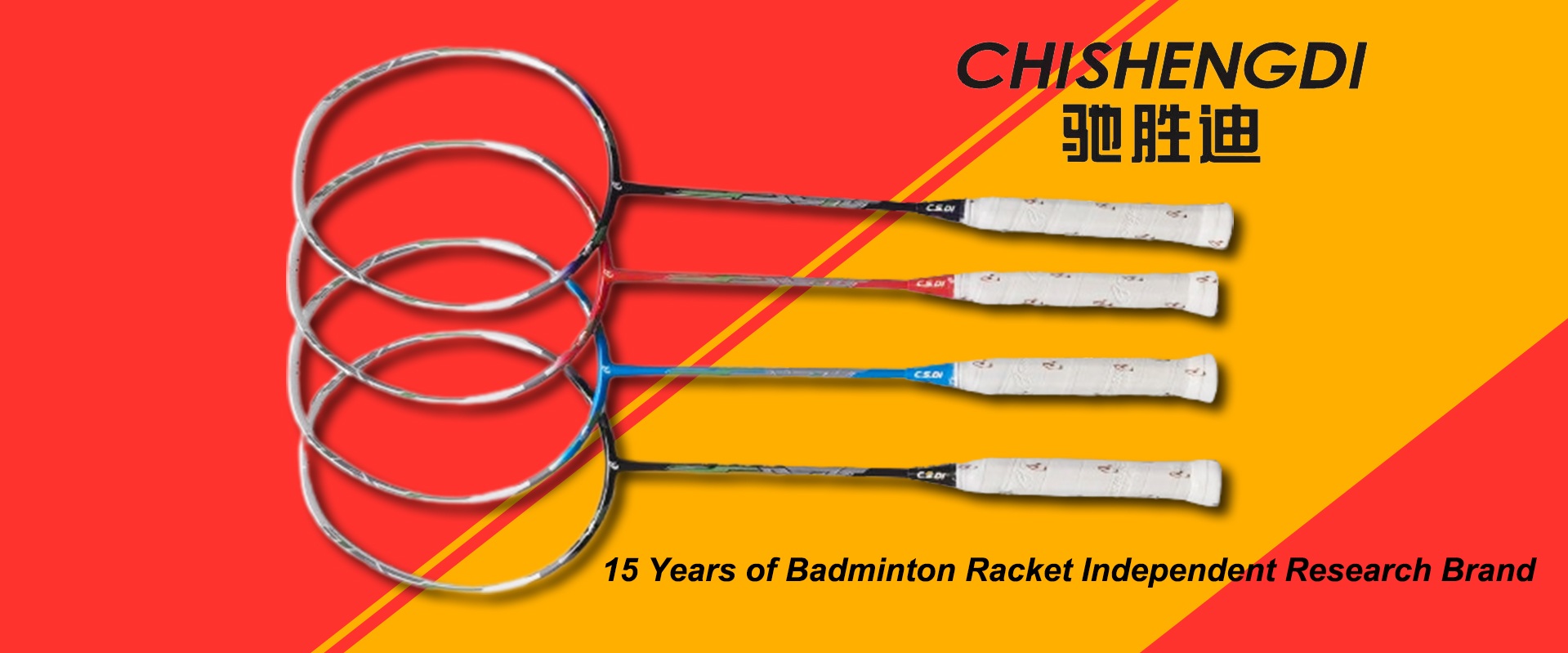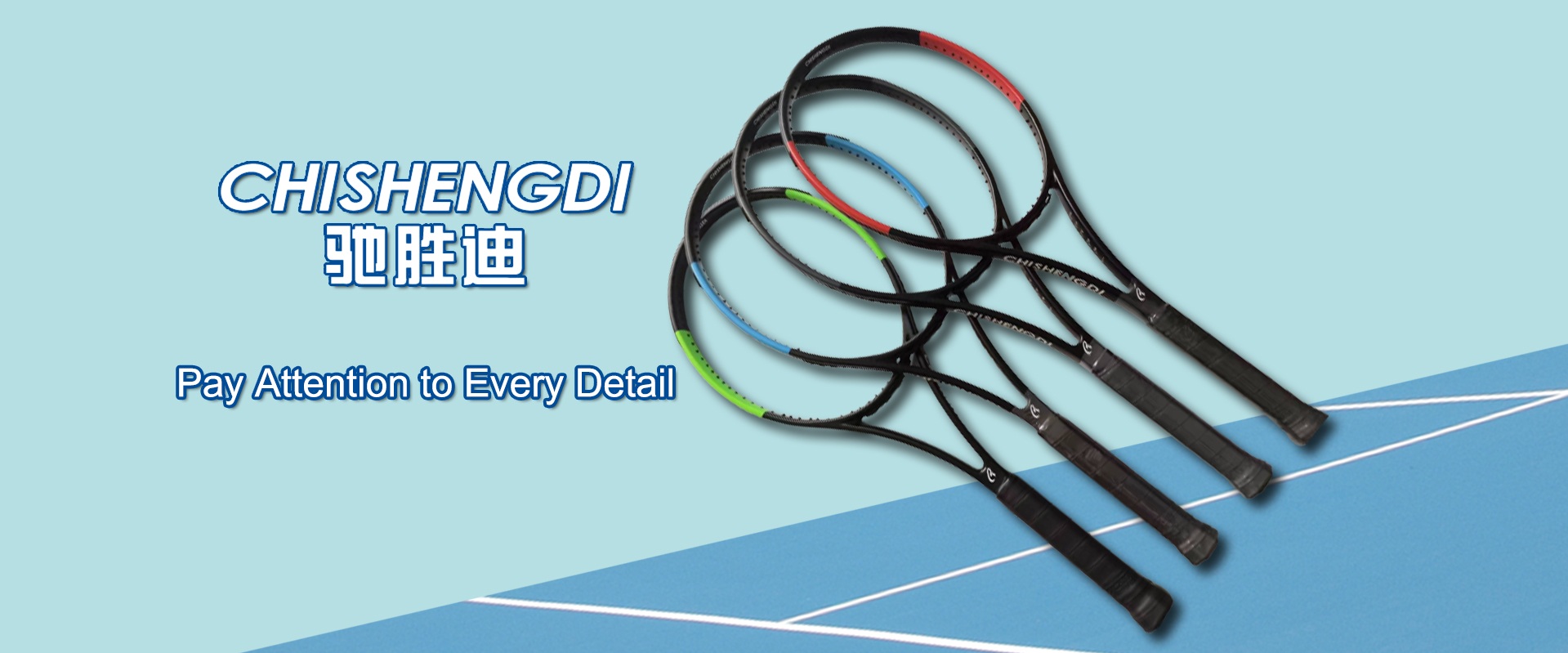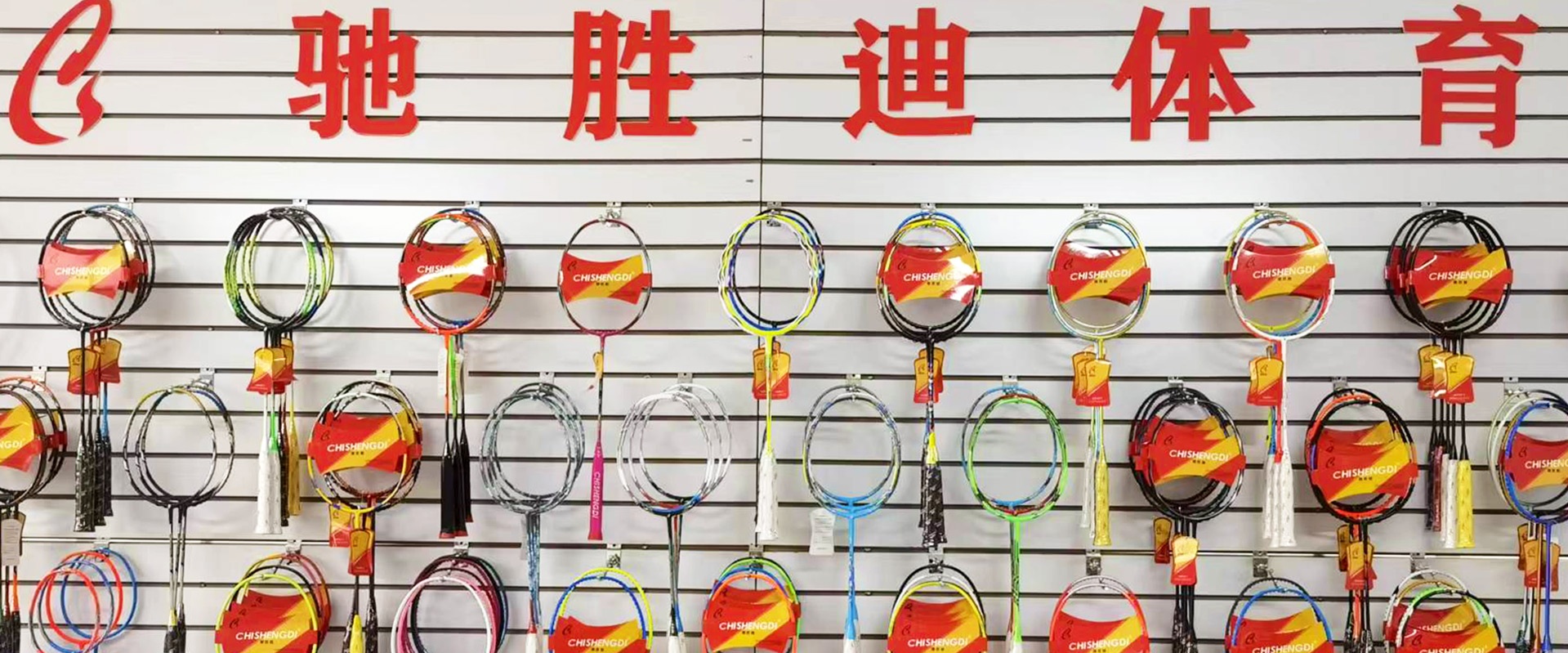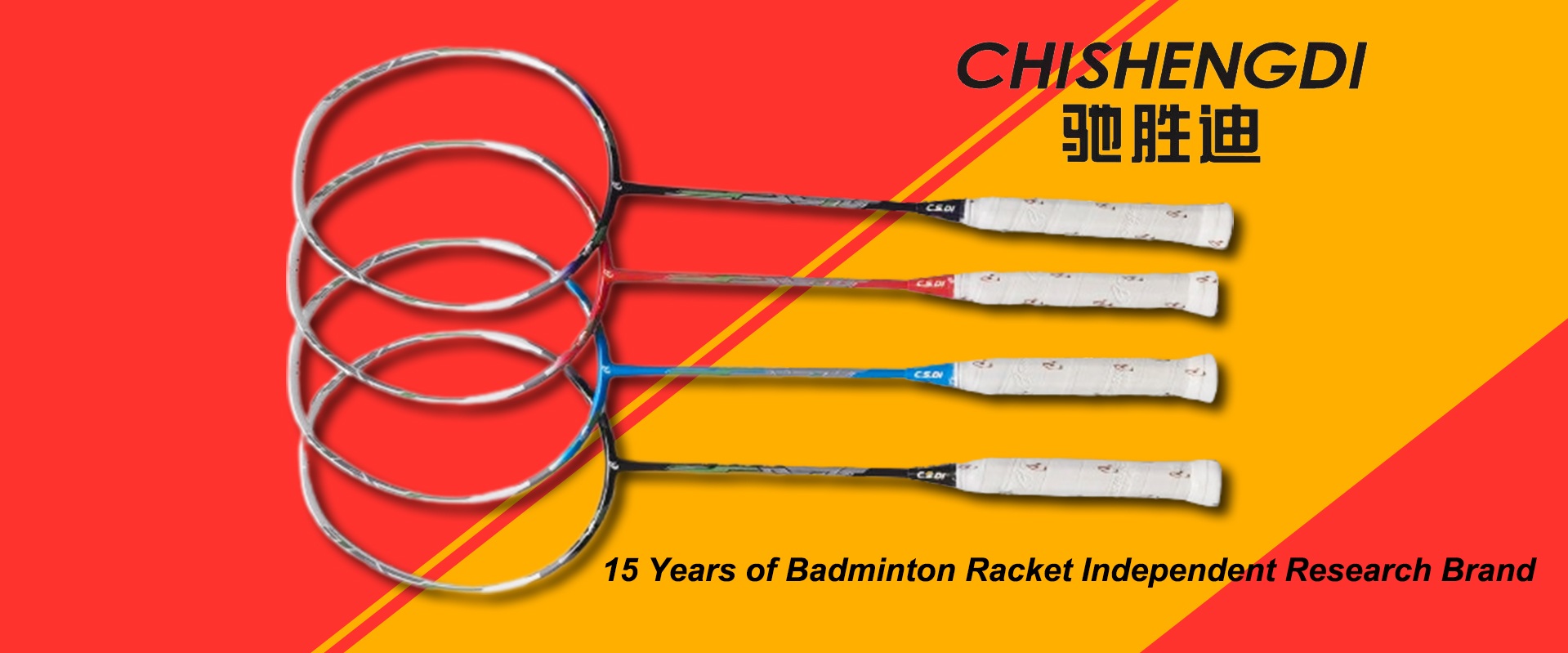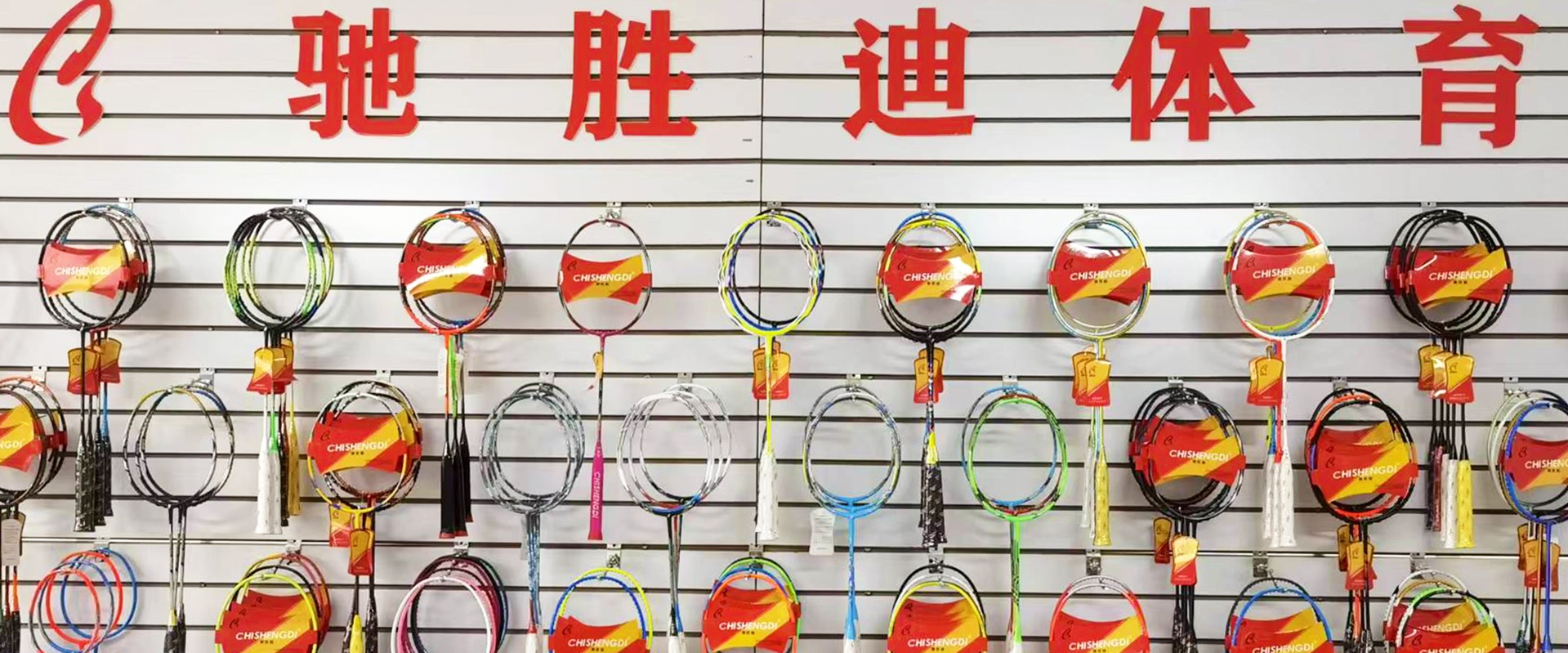+86-13959788969
1. Analysis of the core structure of a tennis racket
1.1 Head-patting system
As the core load-bearing structure, the modern mainstream material for racket frames is carbon fiber composite material (including graphene and Kevlar fiber reinforcement layers). In 2025, the hardness range of top-tier products will be concentrated in the RA55-73 interval. The thickness of the racket frame directly affects force transmission: thick racket frames (≥22mm) enhance force output by increasing the movement space of the string bed, while thin racket frames (≤18mm) enhance control accuracy by limiting the displacement of the string bed.
The grommet, made of high-density polyethylene, plays a crucial role in protecting the stringing holes and reducing string wear. The typical diameter of the stringing holes is 1.2-1.5mm, and the wide hole design allows for a 30% increase in the displacement amplitude of the horizontal and vertical strings of the 16×19 string bed, significantly enhancing the topspin effect.
The sweet spot area is directly related to the racket face size: the effective hitting area of a 100 square inch racket face reaches 65%, while this figure drops to 48% for a 90 square inch model. The Head Speed series used by professional player Djokovic extends the sweet spot area vertically by 5% through an elliptical frame design, balancing power and control.
1.2 Handle system
The grip size follows the American standard, with the size 2 handle (4 1/4 inches) fitting 86% of Asian male palm sizes. The sweatband material has undergone significant evolution: the new model in 2025 adopts microcellular foam technology, with sweat absorption increased to 12g/cm², a 40% improvement over traditional PU material.
The balance point is precisely measured at 1 point = 1/8 inch (3.175mm). The Wilson PS97 used by Federer features a 12-point head-light design, meaning the balance point is located at 38.1mm in the direction of the racket handle, achieving a balance between swing speed and stability.
1.3 String system
The string bed configuration forms performance differentiation: the 16×19 sparse structure allows a vertical string displacement of up to 4.2mm, generating a stronger topspin; the 18×20 dense structure controls lateral deformation within 2.8mm, enhancing ball control accuracy. The popularity of polyester strings has expanded the string tension range to 45-70 pounds. The Babolat RPM Blast used by Nadal can generate an additional 12% spin speed at 58 pounds.
II. Scientific interpretation of performance parameters
2.1 Weight and Volatility
There is a significant difference between the unstrung weight and the weighted swing weight after stringing: the actual weighted swing weight of a 270g unstrung racket increases to 305g after stringing and attaching a sweatband. The difference stems from the combined effect of 25g string and 15g grip accessories. It is recommended that advanced players choose models within the 300-320g range, with a weighted swing weight ratio (Swingweight/Mass) of 3.2-3.5, balancing strength and control.
2.2 Racket face and sweet spot
The International Tennis Federation (ITF) stipulates that the surface area of a competitive racket must not exceed 125 square inches, with the current mainstream models focusing on the range of 95-110 square inches. Large-surface models (such as the Prince Phantom 107) have a 23% increase in fault tolerance, but the force decay reaches 18% when the ball is hit 10mm away from the sweet spot; small-surface models (such as the Wilson Blade 98) have a force concentration factor of 1.35 when hitting the ball accurately, significantly better than the 1.12 of large-surface models.
2.3 Length and moment
After extending the standard 27-inch racket to 27.5 inches, the height of the hitting point for the serve increases by 7cm, and the torque increases by 12%. However, when dealing with body-high shots, the increased swing radius of the extended racket leads to an increase in reaction time by 0.03 seconds, placing higher demands on predictive ability.
III. Scientific Framework for Purchase Decision-Making
3.1 Technical level adaptation
Novice stage: Choose a racket with a face area of 100-110 square inches (such as Head Radical MP), a lightweight design weighing 250-290g, paired with a low tension of 50-55 pounds. It is recommended to use a 16×19 string bed structure to enhance forgiveness.
Advanced stage: 95-100 square inches of racket face (Babolat Pure Strike), 300-320g balanced weight, 55-60 pounds medium tension, 18×20 string bed for enhanced control precision.
Career reference: Djokovic uses the Head Speed Pro (95 square, 310g, 62 pounds), while Nadal chooses the Babolat Pure Aero (100 square, 300g, 55 pounds).
3.2 Physical fitness adaptability
For power-oriented players: choose a head-heavy balance (4-6 head-heavy) and a rigid frame (RA70+).
Flexible player: light head design (8-10 points lighter), soft frame (RA60-65).
Players in recovery period: Use Kevlar fiber shock-absorbing structure (such as Tecnifibre Tfight 305).
3.3 Adaptation of playing style
Baseline player: head-heavy racket (100+ face) + 18x20 string bed.
Net-front player: light racket head (95-98 racket face) + 16×19 string bed.
All-around player: balanced design (3-point light/heavy).
IV. Industry Development Trends and Technological Frontiers
4.1 Breakthroughs in materials science
The new model in 2025 adopts carbon nanotube reinforcement technology, which increases the torsional strength of the frame by 19% while reducing its weight by 8%. The application of Kevlar fiber at the throat of the racket reduces the vibration frequency from 1200Hz to 850Hz, effectively reducing the risk of tennis elbow.
4.2 Application of environmentally friendly materials
The proportion of bio-based resin in the racket frame has exceeded 40%, and the degradable polyester string has passed the ITF durability test (no breakage after 10 hours of continuous hitting). A certain brand has launched a bamboo fiber composite racket frame, which maintains a RA68 hardness while reducing the carbon footprint by 32% compared to traditional processes.
V. Use, maintenance and performance maintenance
5.1 Threading cycle management
It is recommended to replace the strings every 15-20 hours of playing time or every 2 months. For polyester strings, the replacement interval should be shortened to 10 hours in an environment with humidity >70%. The tension control accuracy of the stringing machine should reach ±1 pound, and the four-axis synchronous stretching technology can reduce uneven stress on the string bed.
5.2 Racket frame protection measures
Avoid dragging the racket frame on hard surfaces. Replace the grommet immediately if its wear exceeds 1.5mm. In low temperature environments during winter, it is recommended to heat the racket handle to 25℃ before use to prevent the carbon fiber material from becoming brittle.
5.3 Storage environment control
The ideal storage conditions are a temperature of 18-22℃ and a humidity of 45-55%RH. When left idle for a long period, the strings should be loosened to 50% tension, and a frame support should be used to prevent deformation. According to a laboratory test, improper storage can reduce the lifespan of the frame by 40%.
By systematically understanding the detailed structure and scientific parameters of tennis rackets, and combining individual differences and playing style requirements, a complete equipment selection plan from basic to advanced levels can be constructed. With continuous breakthroughs in material technology and intelligent technology, tennis rackets are developing towards a more personalized and user-friendly direction.




